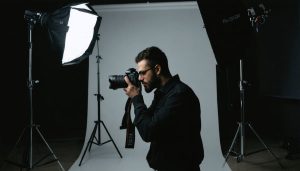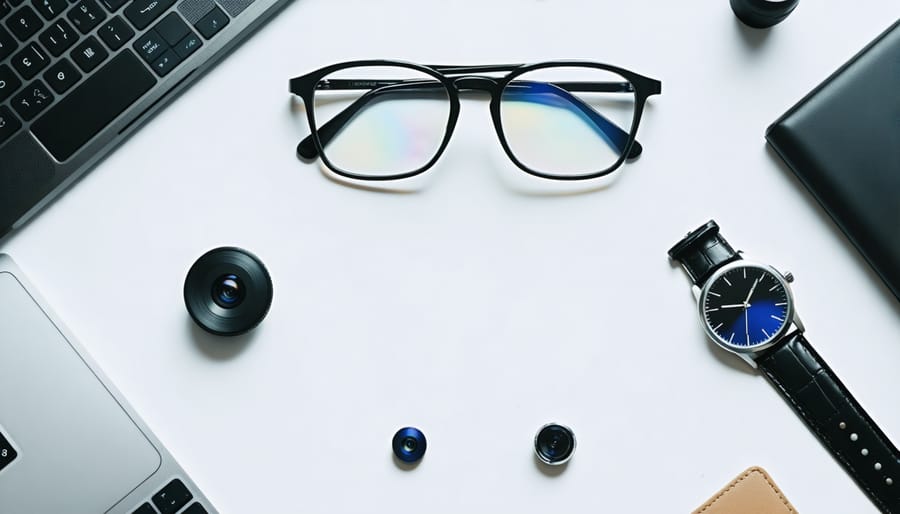
In an era where surveillance technology fits in the palm of your hand, wearable spy cameras have revolutionized both personal security and privacy concerns. These discreet devices, often disguised as everyday accessories like glasses, watches, or buttons, can capture high-definition video while remaining virtually undetectable to the casual observer. From law enforcement professionals conducting covert operations to private investigators gathering evidence, wearable cameras have transformed how we document sensitive situations.
Yet this powerful technology comes with significant ethical and legal implications. While some users leverage these devices for legitimate security purposes, such as personal protection or evidence gathering, others may exploit them for unauthorized surveillance. Understanding both the capabilities and limitations of wearable spy cameras has become crucial in a world where the line between security and privacy grows increasingly blurred.
This exploration delves into the cutting-edge world of wearable spy cameras, examining their technological advances, practical applications, and the complex web of legal considerations that govern their use. Whether you’re a security professional seeking tools for legitimate surveillance or simply interested in protecting your privacy in an increasingly monitored world, grasping the fundamentals of this technology is essential in today’s digital landscape.
Common Types of Wearable Spy Cameras
Clothing-Based Cameras
Clothing-based spy cameras represent some of the most discreet wearable surveillance options available today. These ingenious devices are typically integrated into everyday clothing items, making them virtually undetectable to the casual observer. Button cameras are particularly popular, featuring tiny lenses disguised as ordinary shirt or jacket buttons, usually connected to a small recording unit hidden in an inner pocket.
Neckties with built-in cameras have become increasingly sophisticated, with the camera lens typically positioned near the tie’s knot or tip. These cameras often utilize wide-angle lenses to capture a broader field of view while maintaining a natural appearance. Some modern versions even include Wi-Fi connectivity for real-time streaming.
Other common clothing-based cameras include hat cameras with lenses hidden in the brim, lapel pins with built-in recording capabilities, and even eyeglass frames with cameras concealed in the temples or bridge. The recording quality of these devices has improved significantly, with many now capable of capturing 1080p HD video despite their diminutive size.
It’s worth noting that while these devices are readily available, their use may be restricted in certain situations and jurisdictions. Always verify local laws regarding surveillance equipment before purchase or use.
Accessory Cameras
Among the most ingenious camera accessories in the wearable surveillance market are those disguised as everyday fashion items. Smartwatches with built-in cameras have become increasingly sophisticated, featuring HD recording capabilities while maintaining a sleek, inconspicuous appearance. These devices typically offer both photo and video recording options, with some models including Wi-Fi connectivity for instant sharing.
Camera-equipped glasses have evolved significantly from their bulky predecessors. Modern versions are nearly indistinguishable from regular eyewear, with tiny lenses integrated into the frame’s bridge or temples. Some models offer features like polarized lenses and UV protection, maintaining their functionality as actual sunglasses while concealing their recording capabilities.
Jewelry-based cameras represent another category of discreet recording devices. Pendant necklaces, rings, and broaches can house miniature cameras that capture both still images and video. These accessories often include features like motion detection and remote activation, though their battery life tends to be more limited compared to watch or glasses-based options.
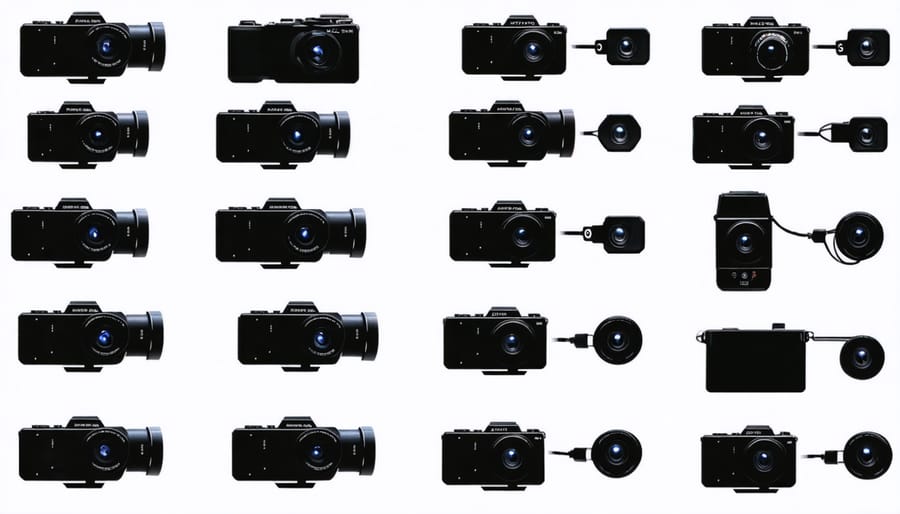
Everyday Object Cameras
Everyday objects have become popular vessels for concealing spy cameras, offering discreet surveillance capabilities in familiar items. Pens equipped with tiny cameras can capture both still photos and videos while appearing completely ordinary during regular use. Keychain cameras, often featuring motion detection and HD recording capabilities, provide convenient portability while maintaining their covert nature. Other common items repurposed for surveillance include watches, USB drives, and even coffee cups, each designed to blend seamlessly into daily life. However, it’s crucial to note that these devices must be used responsibly and in accordance with local privacy laws. The technology has evolved to offer impressive features like night vision and wireless connectivity, while maintaining the authentic look and functionality of the original objects.
Technical Specifications and Capabilities
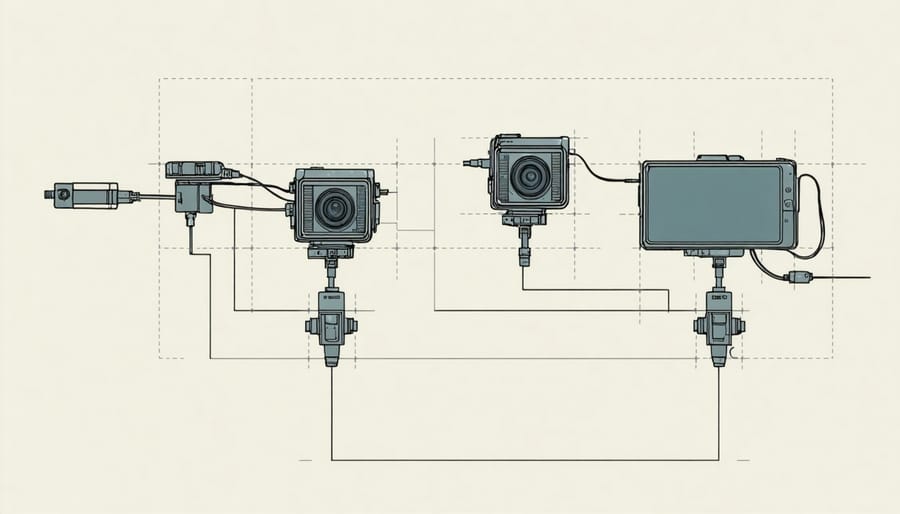
Video Quality and Resolution
Modern wearable spy cameras have made impressive strides in miniature camera technology, now offering video quality that rivals traditional action cameras. Most current models can record in Full HD (1080p) resolution, while premium options even support 4K recording at 30 frames per second. This high resolution ensures that captured footage remains clear and detailed, even when viewed on larger screens.
The best wearable cameras typically feature advanced image sensors that perform well in various lighting conditions. Many incorporate automatic exposure adjustment and image stabilization, helping to reduce blur from movement during recording. Some models even offer HDR (High Dynamic Range) capabilities, allowing for better detail preservation in both shadows and highlights.
Storage capacity plays a crucial role in video quality, with most devices supporting microSD cards up to 128GB. This allows for several hours of high-quality recording before needing to transfer or delete footage. When choosing a wearable camera, it’s important to consider the balance between resolution and battery life – higher resolutions consume more power and storage space, potentially limiting recording duration.
Battery Life and Storage
Battery life and storage capacity are crucial factors when choosing a wearable spy camera. Most modern models offer between 60 to 120 minutes of continuous recording on a single charge, though this can vary significantly based on resolution settings and features like motion detection. Premium devices might extend this to 4-6 hours, making them suitable for longer surveillance operations.
Storage options typically range from 16GB to 128GB, with some models supporting expandable memory via microSD cards. At 1080p resolution, you can expect roughly 1 hour of footage per 8GB of storage. Many newer models feature loop recording, automatically overwriting older files when storage is full.
To maximize battery life, consider cameras with power-saving features like motion activation or scheduled recording. Some wearable cameras also support USB power banks for extended operation. Keep in mind that higher resolution settings and wireless connectivity features will drain the battery faster. For professional surveillance, it’s worth investing in a model with replaceable batteries or carrying a backup power source.
Remember to regularly transfer and backup your recordings to prevent data loss and maintain available storage space.
Connectivity Options
Modern wearable spy cameras come equipped with various connectivity features that make data transfer and remote monitoring more convenient than ever. Most current models offer built-in Wi-Fi capabilities, allowing seamless integration with smart surveillance systems and mobile devices.
Bluetooth connectivity is another common feature, enabling quick pairing with smartphones for real-time video streaming and camera control. This is particularly useful for law enforcement and security professionals who need immediate access to footage without drawing attention to their activities.
Many advanced models now include cellular connectivity options (4G/5G), allowing for live streaming and remote access from virtually anywhere. This feature proves invaluable for surveillance operations requiring constant monitoring and immediate response capabilities.
For data transfer, most wearable cameras offer multiple options. USB-C ports provide the fastest direct connection for downloading footage, while memory card slots allow for easy storage expansion and physical transfer of recordings. Some models even support automatic cloud backup when connected to Wi-Fi, ensuring your footage remains secure and accessible.
It’s worth noting that these connectivity features often come with robust encryption protocols to protect sensitive data from unauthorized access. When choosing a wearable camera, consider which connectivity options best suit your specific needs while maintaining appropriate security measures.
Legal and Ethical Considerations
Privacy Laws
When using wearable spy cameras, it’s crucial to understand and comply with privacy laws to avoid legal complications. In most jurisdictions, recording in public spaces is generally permitted, but recording in private areas without consent can lead to serious legal consequences.
The expectation of privacy doctrine plays a central role in determining what’s legal. For instance, recording in changing rooms, bathrooms, or through windows of private residences is strictly prohibited. Many states require “two-party consent” for audio recording, meaning all parties being recorded must give their permission, while others follow “one-party consent” rules.
Workplace surveillance laws vary by region, but employers typically must inform employees about monitoring activities. Some jurisdictions require visible notices indicating the presence of surveillance equipment, making covert wearable cameras potentially problematic in professional settings.
International privacy laws add another layer of complexity. The European Union’s GDPR has strict regulations about collecting and storing personal data, including video recordings. In some countries, like South Korea and Japan, photography in certain public spaces requires explicit permission.
To stay within legal boundaries, always research local privacy laws before using wearable spy cameras, obtain necessary consents, and avoid recording in situations where there’s a reasonable expectation of privacy. Remember that even if recording is legal, sharing or publishing the footage may have separate legal implications.
Ethical Usage Guidelines
While wearable spy cameras can serve legitimate purposes, their use comes with significant ethical responsibilities. Always prioritize consent and privacy when operating these devices. In professional settings, clearly communicate the presence of recording equipment to all parties involved, and obtain written permission when necessary.
Never use these cameras in private spaces such as bathrooms, changing rooms, or private residences without explicit authorization. Additionally, respect people’s reasonable expectation of privacy in public spaces – just because you can record doesn’t mean you should.
For documentary or journalistic purposes, maintain transparency about your recording activities whenever possible. If discretion is necessary for legitimate investigative work, ensure you have proper authorization and follow relevant professional guidelines.
When storing recorded footage, implement robust security measures to protect sensitive data. Delete unnecessary recordings promptly, and never share footage without the subject’s consent unless required by law or covered by journalistic exceptions.
Consider the golden rule: how would you feel if someone was recording you without your knowledge? Use this technology responsibly, focusing on legitimate purposes such as personal security, professional documentation, or authorized surveillance activities.
Remember that ethical usage goes beyond mere legal compliance – it’s about respecting human dignity and privacy rights while serving a legitimate purpose. When in doubt, err on the side of transparency and consent.
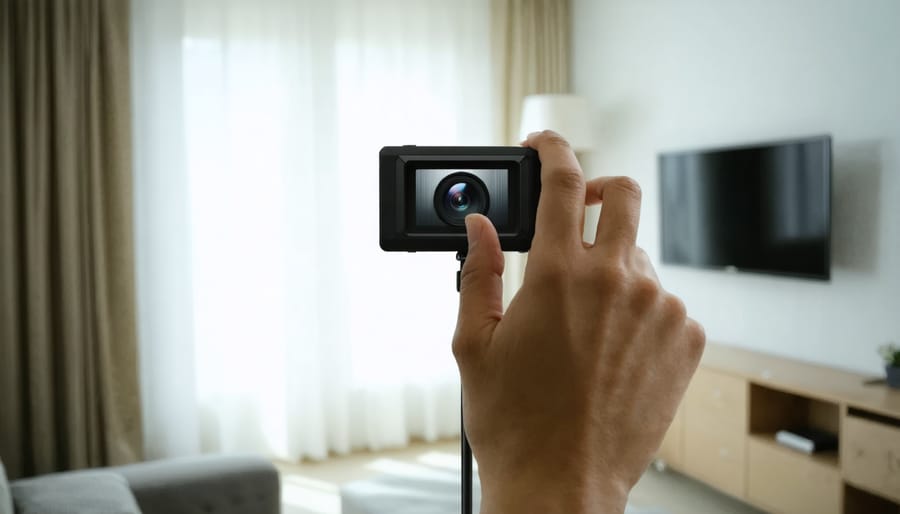
Detection and Counter-Surveillance
As wearable spy cameras become increasingly sophisticated, detecting them requires a combination of awareness and technology. Modern detection methods range from simple visual inspection to advanced electronic countermeasures. One effective technique is to scan your environment with a flashlight in low light conditions – camera lenses often reflect light distinctively, creating a telltale glint that can reveal their presence.
Professional RF detectors can identify wireless signals commonly used by spy cameras to transmit footage. These devices are particularly useful in detecting cameras with advanced surveillance capabilities that stream video in real-time. While consumer-grade detectors are available, their effectiveness varies significantly, so investing in a quality device is recommended if you’re serious about counter-surveillance.
Smartphone apps can also help in detection efforts. Many utilize your phone’s camera to spot infrared lights used by night vision cameras, though results may vary depending on your device’s capabilities. Some apps analyze WiFi networks to identify suspicious devices, though this method requires technical knowledge to interpret results accurately.
Physical privacy measures remain essential. Strategic placement of barriers, adjusting blinds, and maintaining awareness of sight lines can significantly reduce vulnerability to surveillance. In professional settings, implementing regular security sweeps and establishing clear policies about recording devices helps maintain privacy.
For those concerned about more sophisticated surveillance, consider:
– Using signal jammers (where legal)
– Installing privacy films on windows
– Conducting regular electromagnetic field (EMF) surveys
– Implementing access control measures
– Using privacy-focused clothing and accessories
Remember that the best defense is often a combination of technical tools and practical awareness. Stay informed about emerging surveillance technologies and regularly update your counter-measures accordingly.
As we’ve explored throughout this article, wearable spy cameras represent a fascinating intersection of technology and surveillance capabilities. While these devices offer legitimate uses in security, documentation, and personal safety, they also come with significant responsibilities. The key is striking the right balance between utilizing their benefits and respecting privacy boundaries.
Remember that the legal landscape surrounding these devices varies by location, and it’s crucial to familiarize yourself with local regulations before use. Whether you’re considering a body-worn camera for personal security or professional documentation, always prioritize transparency and obtain necessary permissions when recording others.
The technology continues to evolve, with improvements in video quality, battery life, and miniaturization making these devices increasingly sophisticated. However, with greater capability comes greater responsibility. Consider the ethical implications of your recordings, maintain appropriate documentation of consent when required, and always handle recorded data with care and discretion.
For those interested in wearable cameras, focus on legitimate applications such as personal safety, professional documentation, or approved security purposes. Avoid any uses that could infringe on others’ privacy rights or cross legal boundaries. By approaching these powerful tools with respect and responsibility, we can harness their benefits while maintaining ethical standards and protecting individual privacy rights.
















